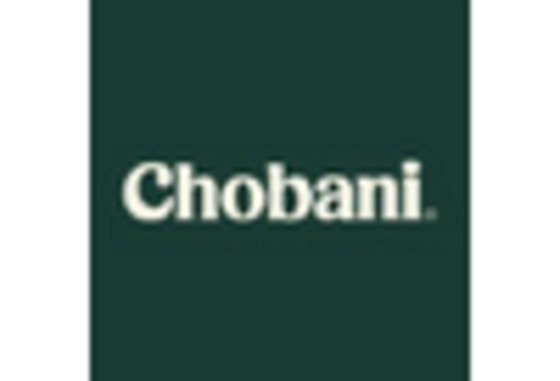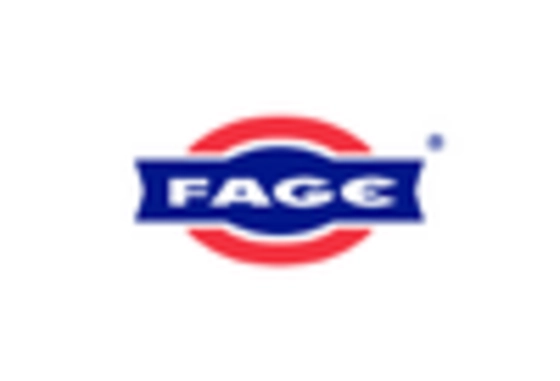Increased Retail Availability
The accessibility of non-GMO yogurt products has significantly improved, contributing to the growth of the Non-GMO Yogurt Market. Retailers are increasingly recognizing the demand for non-GMO options and are expanding their product lines to include these offerings. This trend is evident in both large supermarket chains and local health food stores, which are dedicating more shelf space to non-GMO products. As a result, consumers have greater access to a variety of non-GMO yogurt brands, facilitating their purchasing decisions. This increased availability is likely to further drive sales and enhance the visibility of the Non-GMO Yogurt Market.
Innovative Product Development
Innovation plays a crucial role in the Non-GMO Yogurt Market, as manufacturers strive to meet the diverse tastes and dietary needs of consumers. The introduction of unique flavors, textures, and formulations has become a focal point for brands aiming to differentiate themselves in a competitive landscape. For instance, the emergence of plant-based non-GMO yogurts has attracted a new segment of health-conscious consumers. This trend not only enhances product variety but also contributes to the overall growth of the Non-GMO Yogurt Market, as companies invest in research and development to create appealing offerings that resonate with consumers.
Consumer Education and Awareness
Consumer education regarding the benefits of non-GMO products is a pivotal driver in the Non-GMO Yogurt Market. As information about the potential advantages of non-GMO foods becomes more widespread, consumers are becoming more informed about their dietary choices. Educational campaigns and labeling initiatives have played a significant role in raising awareness, leading to a more knowledgeable consumer base. This heightened awareness is likely to influence purchasing decisions, as consumers actively seek out non-GMO yogurt options. Consequently, the Non-GMO Yogurt Market stands to benefit from this trend, as informed consumers are more inclined to choose non-GMO products.
Rising Demand for Non-GMO Products
The Non-GMO Yogurt Market experiences a notable surge in demand as consumers increasingly prioritize health and wellness. This trend is driven by a growing awareness of the potential health risks associated with genetically modified organisms. According to recent surveys, a significant percentage of consumers express a preference for non-GMO products, indicating a shift in purchasing behavior. This heightened demand is reflected in the market, with non-GMO yogurt sales witnessing a steady increase. As consumers become more discerning about their food choices, the Non-GMO Yogurt Market is likely to expand, catering to this evolving consumer preference.
Sustainability and Ethical Considerations
Sustainability concerns are increasingly shaping consumer preferences within the Non-GMO Yogurt Market. Many consumers are not only interested in the health aspects of their food but also in the environmental impact of their choices. Non-GMO yogurt products are often perceived as more sustainable, as they typically avoid the use of synthetic pesticides and fertilizers associated with conventional farming. This alignment with ethical consumption trends is likely to attract environmentally conscious consumers, further propelling the growth of the Non-GMO Yogurt Market. As sustainability becomes a more prominent factor in purchasing decisions, brands that emphasize their commitment to non-GMO practices may gain a competitive edge.



















Leave a Comment